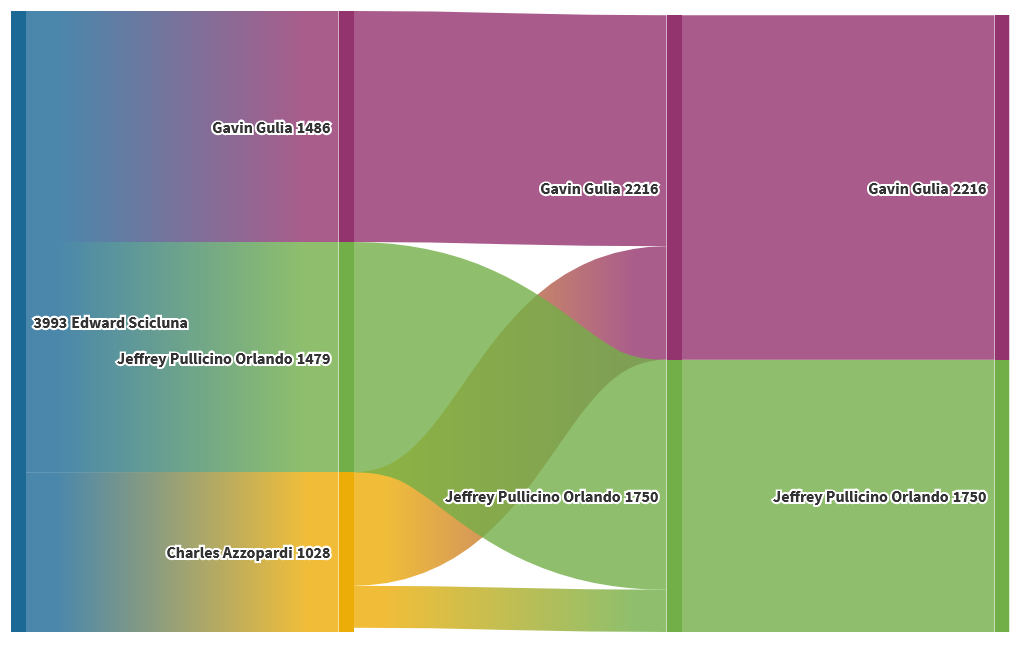How does a casual election work?

General election candidates in Malta are allowed to contest in two different voting districts. If they are elected from both, they must resign from one of them and their seats are filled through a ‘casual election’ – ‘casual’ as in ‘not a regular thing’. Casual elections also happen when an MP resigns or vacates a seat in Parliament. The winner is then determined by reopening ballot papers of the MP who vacated the seat and distributed to the other election candidates according to Single Transferable Voting (STV) procedures.
Let’s take the recent casual election to fill the seat vacated by former Finance Minister Edward Scicluna in the 7th District. Within this district, 28 contested for the 5 seats available. 3 seats went to candidates of the Partit Laburista and 2 seats went to the Partit Nazzjonalista – Partit Demokratiku coalition.
On behalf of Partit Laburista, Ian Borg and Silvio Schembri were elected together with Edward Scicluna. With Edward Scicluna’s resignation, his votes will be transfered according to the next-named candidate on each ballot.
Before the casual election, the fourth Partit Laburista candidate with the most votes was Charles Azzopardi with 2,179, followed by Gavin Gulia with 1,569 and Jeffrey Pullicino Orlando and with 1,040 votes. The quota to get elected was 4,147 votes.
On the day of the casual election, however, Azzopardi was the first candidate to be eliminated after he recevied 1,028 to Gulia’s 1,486 and Pullicino Orlando’s 1,479. As no one reached the quota necessary to get elected, the candidate with the least amount of votes is eliminated and the votes are once again distributed between the other candidates according to STV.
Gulia emerged as the winner after he garnered 2,216 votes against Pullicino Orlando’s 1,750 votes. This graphic shows the process better: